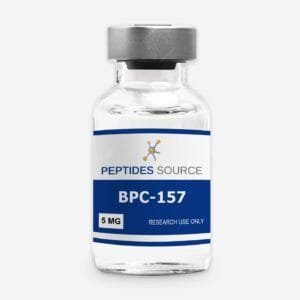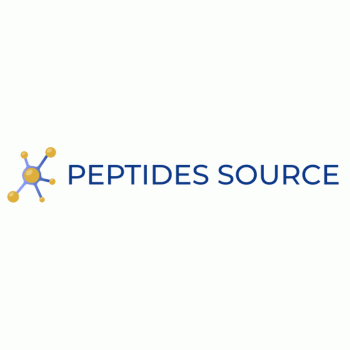
FREE SHIPPING
99% PURE PEPTIDES
SAME DAY SHIPPING
SECURE PAYMENTS
KPV 5mg
$35.00
You save
- Physical profile: Lyophilized powder
- This product is sold as a research chemical and not for human or animal consumption. For laboratory use by qualified professionals.
Availability: 10 in stock (can be backordered)
Availability: Ships today if ordered and paid by 12 PM EST. (Except Saturdays & Sundays)
Product Usage
KPV 5mg IS INTENDED AS A RESEARCH CHEMICAL ONLY. This designation allows the use of research chemicals strictly for in vitro testing and laboratory experimentation only. All product information available on this website is for educational purposes only. Bodily introduction of any kind into humans or animals is strictly forbidden by law. This product should only be handled by licensed, qualified professionals. This product is not a drug, food, or cosmetic and may not be misbranded, misused or mislabled as a drug, food or cosmetic.
What is KPV?
KPV is a synthetic tripeptide composed of three amino acids: Lysine–Proline–Valine (Lys-Pro-Val). It is derived from the C-terminal fragment of alpha-melanocyte-stimulating hormone (α-MSH), a naturally occurring peptide. This peptide is involved in immune regulation, inflammation control, and tissue protection. KPV has been extensively studied in preclinical and in vitro models for its potential anti-inflammatory, mucosal-protective, and wound-healing properties.
Research suggests that KPV may support tissue repair in skin and mucosal surfaces. It may help modulate inflammatory cytokines and promote the integrity of epithelial barriers. Such barriers include those found in the gastrointestinal (GI) tract and skin. Due to these biologic effects observed in laboratory settings, KPV has gained growing interest. This interest comes from scientific and medical research communities.
However, it remains designated for research use only and is not approved as a drug or for human or veterinary use.
KPV Structure
-
Sequence: Lys–Pro–Val (KPV)
-
Peptide Type: Synthetic tripeptide fragment of α-MSH
-
Molecular Formula (free peptide, typical research-grade listing): C₁₆H₃₀N₄O₄
-
Molecular Weight: ~342.4 g/mol
-
PubChem CID: 125672
KPV is typically supplied as a lyophilized powder and formulated for in vitro laboratory research only.
KPV Research Overview
KPV is a synthetic derivative of the C-terminal portion of α-MSH and has attracted attention for its potential regenerative and anti-inflammatory characteristics. Preclinical research indicates that KPV may:
-
Modulate immune and inflammatory pathways
-
Support mucosal and epithelial barrier integrity
-
Influence cytokine signaling and oxidative stress pathways
-
Contribute to wound and tissue repair in experimental systems
KPV is commonly offered as a research-grade peptide (e.g., 5 mg or 10 mg vials) with high purity, secure checkout, and fast shipping from specialized peptide suppliers. All such products are intended strictly for controlled research use, not for human consumption or therapeutic application.
1. Tissue Healing & Regeneration
Preclinical research suggests that KPV may play a supportive role in tissue healing and regeneration. This is particularly true in epithelial and mucosal tissues:
-
In experimental wound models, KPV has been associated with faster re-epithelialization, improved barrier restoration, and reduced inflammatory infiltrates.
-
KPV may help modulate key inflammatory mediators (such as TNF-α and IL-6) and intracellular signaling cascades (e.g., NF-κB, MAPK), which are closely tied to tissue repair dynamics.
Overall, KPV’s regenerative profile in preclinical models appears to be driven by a combination of anti-inflammatory effects, improved barrier function, and support of local repair processes. Human data are still limited, and further studies are needed to clarify its full potential.
2. Anti-Inflammatory Effects
KPV is best known for its anti-inflammatory activity in experimental systems:
-
As a melanocortin-derived tripeptide, KPV may reduce production of pro-inflammatory cytokines such as TNF-α, IL-1β, and IL-6 in cell and animal models.
-
It appears to engage components of the melanocortin system and related downstream pathways without producing the pigmentary or hormonal effects associated with full-length α-MSH.
-
Studies in models of inflammatory bowel disease (IBD) and skin inflammation suggest that KPV may help ameliorate tissue damage, reduce inflammatory infiltrates, and normalize local immune responses.
These findings position KPV as a tool compound for exploring immune modulation and inflammatory control in research settings.
3. Gastrointestinal (GI) Protection & Mucosal Healing
A key focus of KPV research involves the gastrointestinal tract:
-
KPV is transported via PepT1, a peptide transporter expressed in intestinal epithelial cells, enabling direct interaction with gut mucosal surfaces. Wikipedia+1
-
In rodent models of colitis and intestinal injury, KPV (and Ac-KPV analogs) have shown the ability to:
-
Reduce histologic signs of inflammation
-
Support epithelial barrier integrity
-
Lower activity of inflammatory mediators and oxidative stress markers
-
These data suggest that KPV may be a valuable research tool for studying intestinal permeability, leaky gut models, and IBD-related mechanisms.
4. Angiogenesis & Microvascular Support
While BPC-157 is heavily associated with angiogenesis, KPV’s effects appear more indirect. They operate largely through anti-inflammatory and barrier-support mechanisms:
-
By reducing inflammatory signaling and oxidative stress, KPV may indirectly support healthier microvascular environments in the gut and skin.
-
Some models indicate improved tissue perfusion and reduced inflammatory vascular damage, likely mediated through downstream changes in cytokines and endothelial signaling, rather than direct pro-angiogenic stimulation.
KPV’s role here is best understood as modulating the inflammatory milieu around blood vessels rather than driving angiogenesis on its own.
5. Neuroprotection & Nerve-Related Research (Emerging)
Compared with BPC-157, KPV has less direct data in neurotrauma models. However, its systemic anti-inflammatory and melanocortin-related actions have prompted exploratory work in:
-
Neuroinflammation and brain–gut axis research
-
Models where microglial activation, cytokines, and oxidative stress are key drivers
Most neuroprotective and nerve-regeneration data belong to other peptides (like BPC-157). Therefore, for KPV this area remains early-stage and requires further study.
6. Muscle Recovery & Exercise-Related Models
KPV is not primarily a “muscle growth peptide,” but it may be relevant in exercise and tissue-stress models through its anti-inflammatory actions:
-
Inflammatory modulation and barrier protection may indirectly support recovery after strenuous exercise, trauma, or systemic inflammatory burden.
-
Research is more focused on immune and mucosal outcomes than on direct hypertrophy or performance, so KPV is best viewed as a model compound for studying post-injury inflammation and healing, not as an anabolic agent.
7. Joint & Connective Tissue Support (Exploratory)
While most joint and tendon regeneration literature centers on other peptides, KPV’s immune-regulating properties have prompted exploratory interest in:
-
Inflammatory joint models (where cytokine control is central)
-
Barrier and systemic inflammation, which can secondarily affect musculoskeletal tissues
At this time, KPV’s role in joint and bone health is primarily hypothesis-generating. It is not as extensively documented as BPC-157.
8. Cardiovascular & Vascular Inflammation (Early Evidence)
KPV has been evaluated in certain vascular and systemic inflammation models. Preclinical findings suggest it may:
-
Modulate endothelial responses to inflammatory stress
-
Influence cytokine profiles and oxidative stress levels in vascular tissue Wikipedia+1
However, compared with BPC-157, data on myocardial infarction, heart failure, or robust cardio-specific outcomes are much more limited for KPV. Current evidence supports its use primarily as a research tool in vascular inflammation and endothelial biology, rather than a dedicated cardiovascular peptide.
9. Organ & Barrier Protection
Because KPV is derived from α-MSH and transported via PepT1 in the gut, a central theme of KPV research is barrier and organ protection:
-
Intestinal barrier: Improved tight-junction integrity, reduced inflammatory infiltration, and enhanced mucosal repair in colitis and chemically induced GI injury models.
-
Skin barrier: Reduced inflammatory signaling, better wound closure, and support for keratinocyte survival under stress in skin models. PARTICLE, s. r. o.+1
These effects suggest KPV may be especially useful in studies of epithelial biology, barrier dysfunction, and systemic inflammation.
10. Potential Mood & Cognitive Research (Conceptual/Indirect)
Unlike BPC-157, KPV does not yet have a large catalog of direct animal studies in depression, anxiety, or neurodegeneration, but several mechanistic links justify ongoing interest:
-
As a fragment of α-MSH, KPV relates to the melanocortin system, which intersects with stress, immune function, and CNS signaling. Wikipedia+1
-
By modulating inflammation and possibly influencing the gut–brain axis, KPV may be a useful research tool in models where immune activation and barrier dysfunction contribute to mood or cognitive changes.





